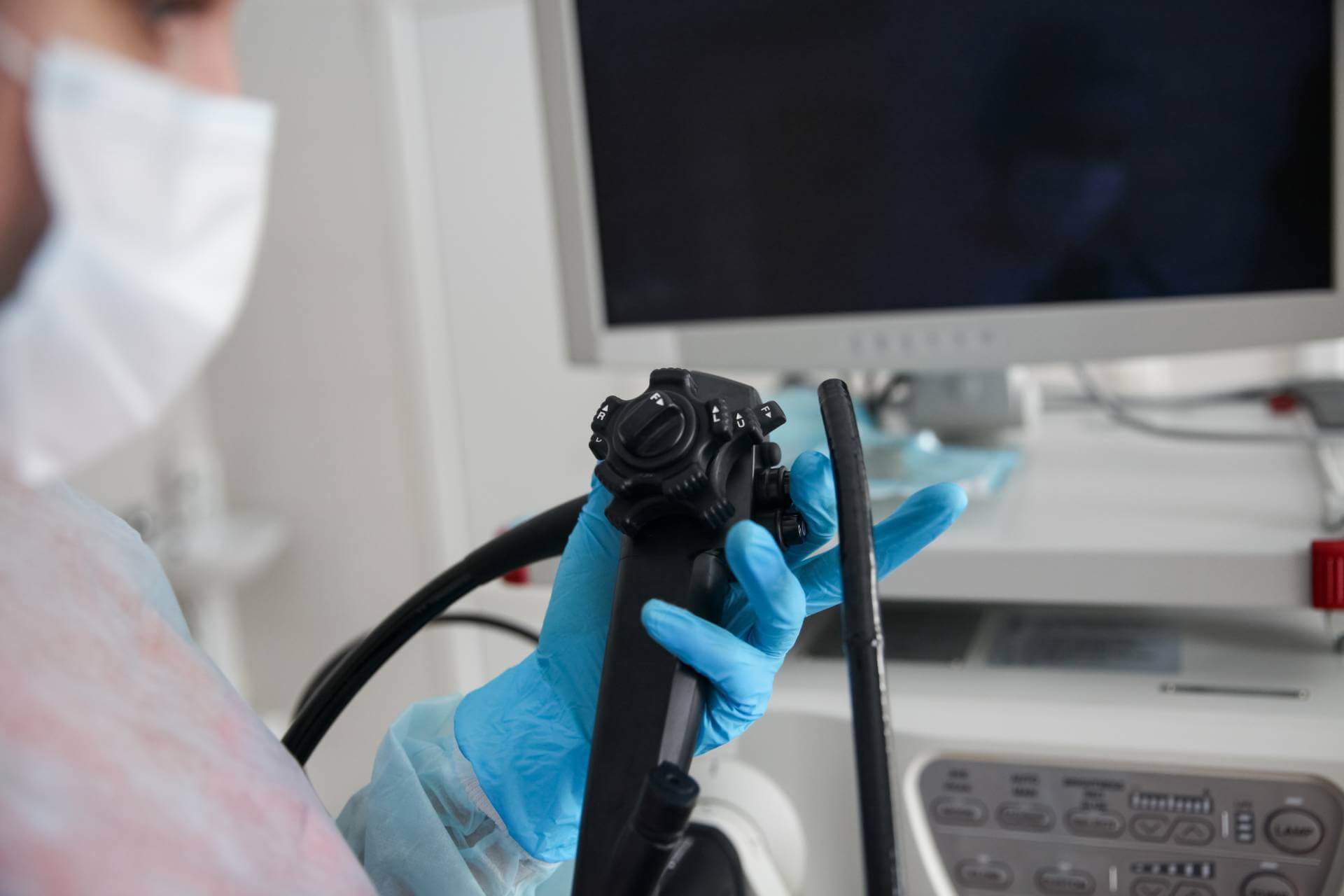Esophagogastroduodenoscopy (EGD) in Lubbock, TX
What is an esophagogastroduodenoscopy?
EGD (esophagogastroduodenoscopy) is a gastrointestinal treatment in which a lengthy, flexible tube, or “scope,” is put into a patient’s mouth and snaked to the beginning of the small intestine, known as the duodenum. The scope has a camera and light at the end, which helps our GI specialists at Lubbock Digestive Disease Associates to easily review the lining of the esophagus, stomach, and the first portion of the small intestine.
An esophagogastroduodenoscopy is often suggested as a way to determine the cause of GI symptoms, like abdominal pain, heartburn and/or acid reflux, difficulty swallowing, bleeding, or abnormal findings from an x-ray. An EGD may also be performed for Lubbock, TX patients who have persistent heartburn symptoms to search for changes that are associated with esophageal cancer. Should you require an EGD, please request a consultation with a GI provider at a Lubbock Digestive Disease Associates location near you.

What are the benefits of an EGD?
An EGD may be beneficial for several reasons. The exam can permit your GI provider to directly visualize the esophagus, stomach, and duodenum (which is the first portion of the small intestine). Further benefits of an EGD include:
- Aids in identifying a range of digestive problems (such as GI infections, Crohn’s disease, GERD, celiac disease, and more)
- Enables the removal of polyps, the biopsy of tissues, and other small procedures
- May help diagnose the causes of certain symptoms, like nausea, vomiting, pain, and heartburn
- Generally is an efficient, safe, and quick process
What should I expect the day before my esophagogastroduodenoscopy?
You will get pre-op instructions from your gastrointestinal provider in preparation for your EGD. Many of our patients are allowed to eat normally before the EGD. We may ask you not to eat or drink after midnight, except for necessary medications. It is incredibly important that you follow the directions given to you by our Lubbock Digestive Disease Associates team. We’ll also give you extra instructions regarding any medications you take. In most cases, you don’t need to make any changes to your medication regimen. This may not be true of all medications, particularly with blood thinners (i.e., aspirin, warfarin, Coumadin®, Plavix®, anti-inflammatories) or if you are diabetic. If this pertains to you, your provider will give you specific instructions.
What can I expect on the day of my EGD?
You will be asked to arrive at one of our Lubbock, TX locations at least an hour before your procedure. You will need to change into a medical gown. An intravenous (IV) catheter will be started in your arm or another area so we can begin the sedation process. We’ll have you connected to special equipment that allows your GI specialist to keep track of your heart rate, blood pressure, oxygen levels, and much more during and after your EGD.
After settling into one of our comfortable exam rooms, we’ll have you lay on your left side on our exam table. Intravenous (IV) sedation will be started. Once you are sedated, the endoscope will be inserted into your mouth. The endoscope will be gently moved through the esophagus, stomach, and duodenum. A small amount of air will be injected through the scope into the GI tract will help us see better. Any fluid left over in the upper gastrointestinal tract will be suctioned out through the endoscope. Depending on the findings of the exam, a variety of things can be done, such as the removal of polyps, biopsies, and controlling bleeding. The exam typically takes between 10 – 20 minutes. Following the exam, you will be taken to one of our comfortable recovery rooms to be monitored as the sedation starts to wear off.
When will I get my EGD results?
After the exam, your specialist will review the findings of the procedure with you. A number of our patients won’t remember this conversation following their exam because they have a foggy brain due to the sedation. It is recommended you bring a family member with you with whom the results can also be discussed. We will provide you with a typed review of what we discussed. In most situations, we’ll provide you with biopsy results within a week.
Does an EGD carry any risks?
Typically, an EGD is a safe and reliable procedure. Overall, complications occur in less than 1% of cases. Many of these problems are non-life-threatening; although if an issue arises, it might result in hospitalization and surgery. Before the exam, a consent form will be reviewed with you by our team. Should you have any questions or concerns, these can be discussed with your GI specialist before your EGD.
Like other tests, an esophagogastroduodenoscopy is not foolproof. You can expect that there is a small, accepted risk that abnormalities, such as cancers, might be undiscovered at the time of the esophagogastroduodenoscopy. It is crucial to maintain visits with our GI specialist and keep them aware of any recent or incessant issues.
Are there alternatives to an EGD?
To an extent, the alternatives to the EGD will revolve around the reasons the EGD is needed in the first place. Typically, an esophagogastroduodenoscopy is the most efficient way to evaluate and diagnose any suspicious findings in your upper GI tract. Although, an x-ray called an upper GI/barium swallow can evaluate your upper GI tract as well. This is, however, just a diagnostic analysis. The treatment of any findings might require an esophagogastroduodenoscopy or surgery.

Take control of your symptoms with an EGD
EGD FAQs
Are an EGD and an upper endoscopy the same thing?
You may hear an EGD (esophagogastroduodenoscopy) referred to as a few different things. At times, it might be called a “gastroscopy” or an “upper endoscopy.” While these names may vary, they generally mean the same thing as an esophagogastroduodenoscopy.
What is considered a "normal" result for an EGD procedure?
Results that are “normal” for an EGD generally indicate that your GI provider did not visualize abnormal tissues in the upper part of the GI structures. However, normal EGD results might be represented by a normal color and smooth texture of the tissue in your esophagus, stomach, and duodenum. In addition, there shouldn’t be any indications of bleeding, growths, or inflammation in these areas. It’s important to know that a “normal” result doesn’t always mean that no medical conditions are present. Some conditions may not be detectable during an EGD or may be located in another portion of the GI tract, outside the reach of the endoscope device utilized throughout the procedure.
Why would an EGD be requested?
Your Lubbock Digestive Disease Associates provider may order an esophagogastroduodenoscopy exam if you have Crohn’s disease or liver cirrhosis to help keep track of these health concerns. In addition, an esophagogastroduodenoscopy may be ordered should you experience:
- Black or tarry stool
- Vomiting of blood
- Heartburn
- Pain in the upper abdomen
- Trouble swallowing
- Unintentional weight loss
- Persistent nausea
What do I need to bring to my EGD procedure?
When you arrive for your EGD, you might need to fill out a few patient forms. Therefore, please bring your insurance card and ID with you to your visit. It can be helpful to bring a written list of medications you take, the dosages, and the reason for taking them. We suggest that you keep any jewelry and other valuables at home.